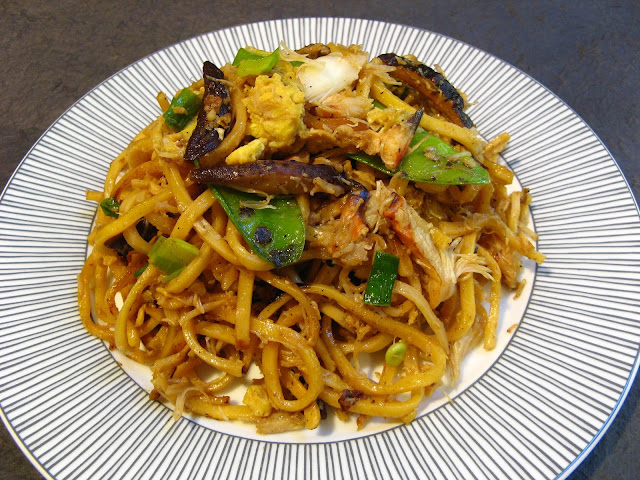The crunchiness of the sugar snap peas contrasts nicely with
the texture of the shrimp in this slightly spicy black bean chili sauce noodle
dish. You would think that stir fried noodle dishes are easy to make (and they
are), but the number of ingredients contained in this common dish can be large,
making the preparation and cooking these dishes at home a process longer than
one would expect. This really isn’t a problem in a restaurant because of the
high heat available to heat the wok. In a restaurant, the ingredients are added
one after the other to the wok without really affecting the high temperature,
resulting in a tasty quick cooking dish. This is not true for a typical home
kitchen because the heat source is not as powerful as that found in
restaurants. So if the restaurant method was used at home to cook the dish, the
first ingredient would stir fry because the temperature would be high, but the
subsequent ingredients would steam rather than brown because the temperature
would drop with each added ingredient. Hence the need for the home cook to
reheat the wok before adding and then removing each ingredient separately in
order to stir fry, rather than steam, the ingredients. I’ve used this wok
cooking method at home even though I have a special wok burner in my kitchen, which
doesn’t approach the heat generated in a restaurant, but is hotter than the
typical heat source found in most home kitchens. So if you’re stir frying over
a typical kitchen stove burner, the time needed to cook a dish is longer since
the time needed to reheat the wok is longer.
Enjoy!



















